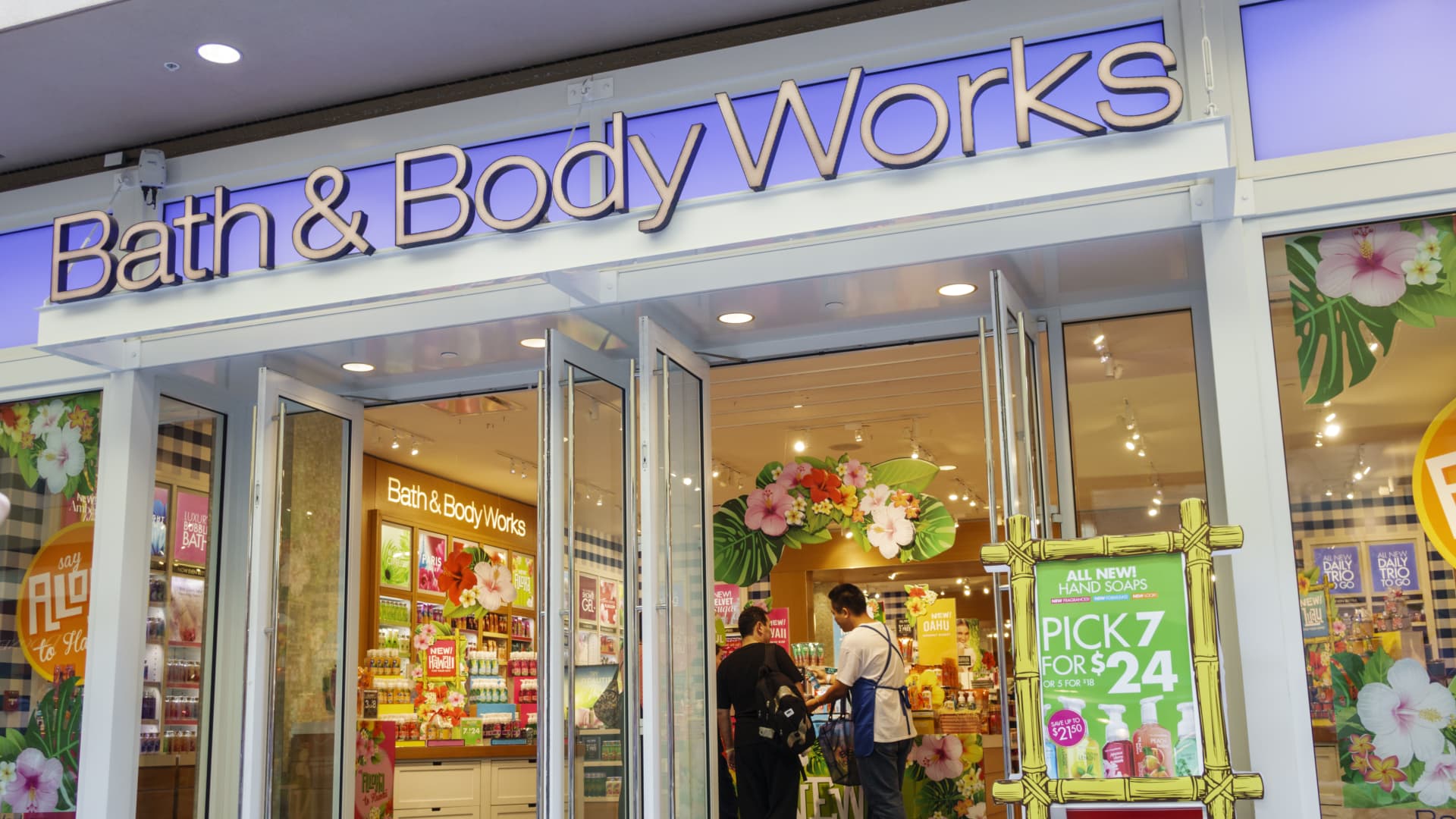Bath & Body Works closed more than 10% higher Thursday after it beat fiscal first-quarter earnings expectations and raised its guidance.
While sales and net income fell year over year, the retailer is now expecting full-year 2023 earnings per share to be between $2.70 and $3.10, compared to the range of $2.50 to $3.00 given during the previous quarter. It expects adjusted earnings per share to be between $2.68 and $3.08 for the year.
The longtime mall shop, known for its lotions, hand sanitizers and soaps, attributed the rosier guidance to “better-than-expected” earnings and the effect of an early debt payoff in the first quarter.
“We delivered first quarter sales in line with our expectations while our EPS was better than anticipated as we saw benefits from our work to improve merchandise margin as well as early benefits from our cost optimization initiatives,” CEO Gina Boswell said in a statement.
The company’s fiscal 2023 will include a 53rd week and its outlook includes that additional week, which it estimates will affect earnings 7 cents per share, the company added.
Here’s how Bath & Body Works did in its first fiscal quarter compared with what Wall Street was anticipating, based on a survey of analysts by Refinitiv:
- Earnings per share: 33 cents adjusted versus 26 cents expected
- Revenue: $1.40 billion versus $1.40 billion expected
The company’s net income for the three-month period that ended April 29 was $81 million, or 35 cents a share, roughly half the $155 million, or 64 cents a share, it reported in the year-ago quarter.
Sales dropped to $1.40 billion, down 4% from $1.45 billion a year earlier.
The retailer expects earnings per share of 27 cents to 32 cents in the next quarter, compared to an estimate of 32 cents a share. It expects sales to decline in the low- to mid-single digits, compared to an estimate of down 3%.
It reaffirmed its full-year sales forecast of flat net sales to a mid-single-digit decline.
Bath & Body Works is coming off a pandemic-fueled sales surge and is grappling with value-conscious consumers who are being more thoughtful about discretionary purchases.
Neil Saunders, managing director of GlobalData, said the quarter’s declines are up against “quite weak prior year numbers,” so the company has work to do to stabilize sales if it doesn’t want to give up its pandemic-era gains.
“This deterioration not only impacts the top line, but it also makes the business less efficient, especially at a time when costs are rising — something that is seen in this quarter’s 35.4% slide in operating income,” Saunders said.
“Looking ahead, we expect this year to be a relatively soft one for sales. At best, revenue will be flat and, realistically, it will be down by low- to mid-single digits,” he added. “However, the bottom line should see some improvement as cost saving initiatives start to bear fruit. Longer term, Bath & Body Works remains well-positioned for growth once economic conditions and consumer sentiment starts to improve.”
As consumers become more cautious and retail discounts and promotions tick up against a tough macroeconomic backdrop, Bath & Body Works’ margins have dropped. They fell about three and a half percentage points to 42.7%, compared to 46.1% in the year-ago quarter.
While the company reversed a mid-March sales slump with promotions in April, it offset those losses by raising prices, Chief Financial Officer Wendy Arlin said during an analyst call. The company added a 95-cent ending to products instead of a 50-cent ending and changed its everyday deals from five for $25 to five for $27, Arlin said.
She attributed the gross margin decline to buying and occupancy expenses that were deleveraged due to lower sales, costs associated with its new direct-to-consumer fulfillment center and increased occupancy expenses for new stores.
Margins were also pressured by a dip in merchandise margin rate, which was driven by inflated raw material prices and investments the company has made into product formulations and packaging, Arlin said.
Inflationary pressure totaled $13 million in the quarter, with the largest sum coming from raw materials, she said.
Margins were better than the 41.2% analysts had expected, according to a research note from Simeon Siegel, a retail analyst for BMO Capital Markets. Margins also topped above pre-Covid levels, Siegel noted.
Image and article originally from www.cnbc.com. Read the original article here.

